‘Gelephu Mindfulness City’ will be spread over 1,000 sq.km. (bigger than Singapore), and is expected to attract non-polluting companies, IT centres, hospitals, schools and resorts, dams and hydro-power projects

Bhutan’s 116th National Day celebrations in Thimphu | Photo Credit: Special Arrangement
It was nearly midnight on a sub-zero December night, but the Bhutanese capital Thimphu seemed to be just waking up. Lines of thousands of people, young and old, snaked around the city’s major roads and town square, queuing up for the National Day celebrations the next day. They were queuing up just to ensure a seat at Thimphu’s Changlimithang Stadium, which normally hosts football matches, archery tournaments and rock concerts. But the venue was about to become the setting for what would be the most important speech by the nation’s 43-year-old King Jigme Khesar Namgyel Wangchuck.
Assisting the crowd to move along, distributing hot porridge overnight and helping clean up, was a massive army of volunteers, or desuups, part of the ‘Desuung’ (Guardians of Peace) project, launched by King Jigme in 2011. Clad in orange jumpsuits, these young women and men are trained for community projects, skilling and work opportunities, disaster management, security and ‘nation-building’, according to the Desuung charter; at more than 40,000, they are a significant number in a country of just 7.8 lakh people. Lobzang Dhendup, 17, told me he volunteered at the National Day event to hear King Jigme speak about the Gelephu infrastructure project, and then added, with a shy grin, “to glimpse the newly-born princess”, the three-month-old baby Sonam Yangden Wangchuck. His patience at his guard post paid off later that evening as he witnessed the entire royal family return to the stadium for a music concert.
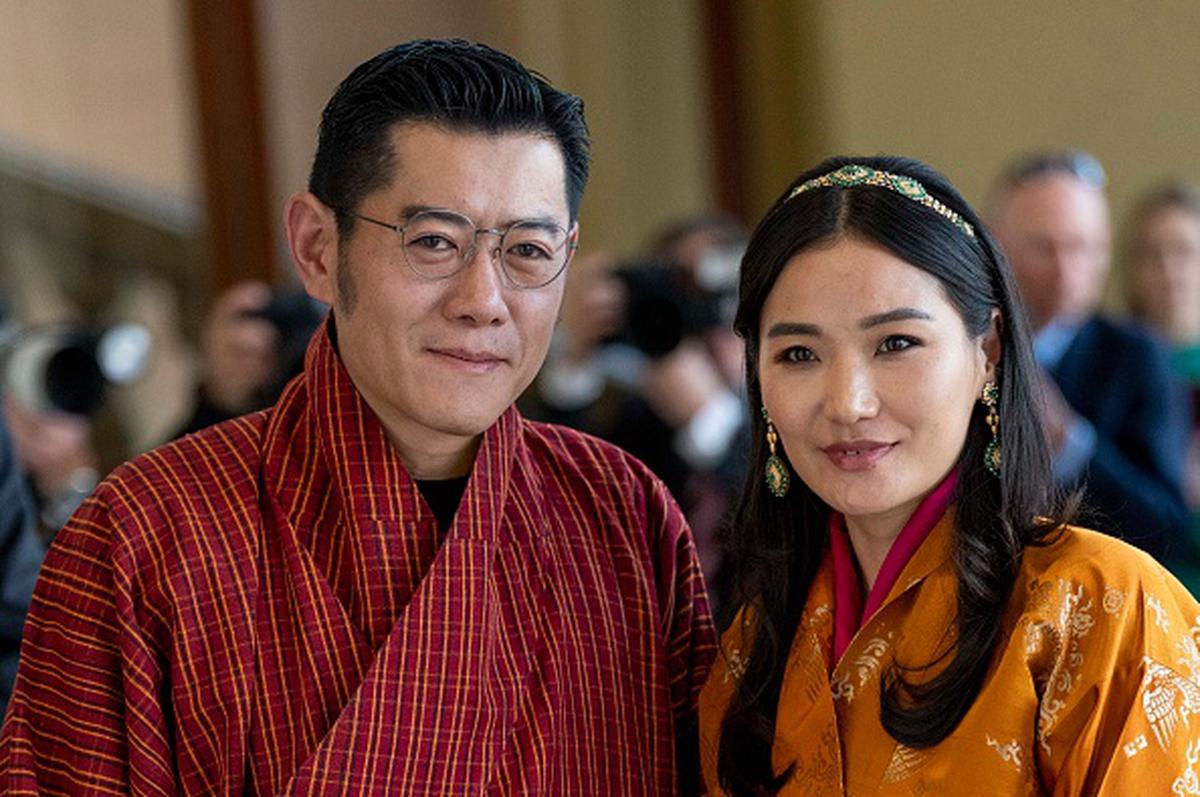
King Jigme and his wife Jetsun Pema | Photo Credit: Getty Images
Bhutanese brand
What is the Gelephu project, and why is it so intricately linked with the Bhutanese king, a monarch with a rock-star appeal in this fledgling Himalayan democracy? As he stepped onto the podium, King Jigme made it clear that his mission was to explain to the nation his plans to turn Gelephu, a sleepy town of 60,000, near Bhutan’s southern border with Assam, into an “economic hub for South Asia”. Fifty years after his father, the fourth king, Jigme Singye, announced that Bhutan’s concept of Gross National Happiness would be an alternative to growth led by GDP, King Jigme said the ‘Gelephu Mindfulness City’ (GMC) would build a new Bhutanese brand, giving the world its first carbon-negative special economic zone.
“[Gelephu] will be a mindfulness city, encompassing conscious and sustainable businesses, inspired by Buddhist spiritual heritage, and distinguished by the uniqueness of the Bhutanese identity,” he announced, with his father and his seven-year old son seated behind him. “I became king at 26, and now I am 43 years old. I will do everything in my power to realise this vision. I will put my own life on the line… Let us work together with fearless determination to build an extraordinary legacy during my reign, and for the next generation,” he said, his softly-intoned voice in contrast with the heavy import of the words of a 45-minute speech.
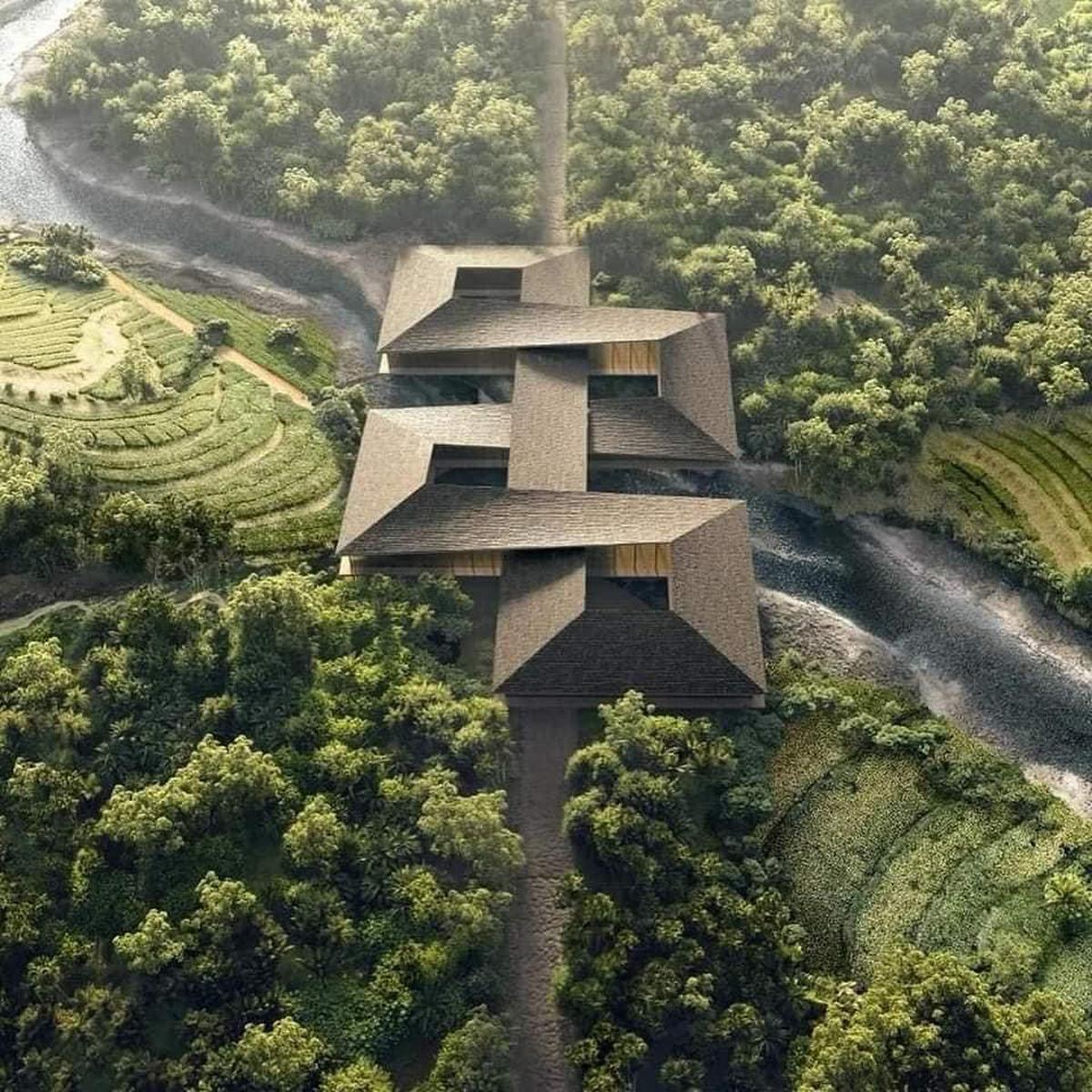
A mandala shaped inhabitable bridge designed by the Bjarke Ingels Group as part of GMC | Photo Credit: Special Arrangement
An inflection point
GMC would be spread over a massive 1,000 sq.km. (bigger than Singapore), and would attract non-polluting companies, IT centres, hospitals, schools and resorts, dams and hydro-power projects with business-friendly laws in a demarcated Special Administrative Region separate from Bhutan. “The land connection from Gelephu through Assam and Northeast Indian States, to Myanmar, Thailand, to Cambodia and Laos, Vietnam, Malaysia and Singapore, is a vibrant economic corridor linking South Asia to Southeast Asia,” he said, painting GMC as an “inflection point” for the South Asian region.
King Jigme has picked an international firm to design the GMC: Bjarke Ingels, the Danish architect and founder of the Bjarke Ingels Group, behind the ‘CopenHill’ building in Copenhagen that houses a ‘waste to energy’ power plant with a ski-slope and trees on its roof, and has many other unique projects to his name, including one for ‘lunar architecture’.
Comparing Gelephu to the famous Taktsang monastery or ‘Tiger’s Nest’, perched high up on the Bhutanese mountains, Ingels said GMC “will be a man-made monument to the divine possibility of a sustainable human presence on earth”. A representational video of the city unveiled for possible foreign partners and investors in Thimphu showed 11 neighbourhoods set in the flat plains of Gelephu, criss-crossed by rivers, with an airport, healthcare and ‘Vajrayana’ spiritual centres, a university, hydroponic and aquaponic agricultural facilities.
By announcing the Gelephu plan right in the middle of Bhutan’s general elections, King Jigme has made it clear that it is his project, not that of any government. It is also clear that the need for the project arises from deep economic worries in the kingdom, that have driven more than 60,000 of its meagre population to jobs abroad, mainly to Australia, Thailand and Singapore and the U.S. This is in addition to about 1,00,000 Bhutanese-Nepalis who were driven out from the south of the country in the 1990s and became refugees abroad (Bhutan disputes the numbers cited by the UN on refugees).
Bhutan’s south was also the scene of Operation All Clear, when the previous fourth King Jigme Singye launched operations against ULFA, Bodo and other insurgent groups in the valley, leading the charge by the Royal Bhutanese Army to flush them out in December 2003, which the Indian Army assisted in.
Among those who have left most recently are the country’s youth, skilled workers and government officials (more than 800 resigned in just 2021-22), who, when asked, say, “gokap ra mindu” in local Dzongkha, or “there are no opportunities”.
“Our challenge is that we have barely 7,00,000 people in our country. Unless we find the right solution, our population may dwindle to the point when we have more shops than customers, more restaurants than diners, and more houses than tenants,” the king said in his speech, appealing to Bhutanese abroad to return now to participate in the Gelephu project.
But Bhutan’s challenges are much greater than providing openings for its next generation. To begin with, the government will need to sink in a large investment to get Gelephu started, to either extend the current airstrip or to build a whole new airport for larger planes to land. Then there are worries of entering a debt-trap that has engulfed many neighbours. Moreover, Gelephu receives copious rainfall, which could make parts of it inaccessible for several months. Tensions in neighbouring Northeast States of India, from Assam to Manipur, and the use of nearby forests by various insurgent groups, including some from Myanmar and Bangladesh, could pose security concerns, and so could India-China boundary tensions.
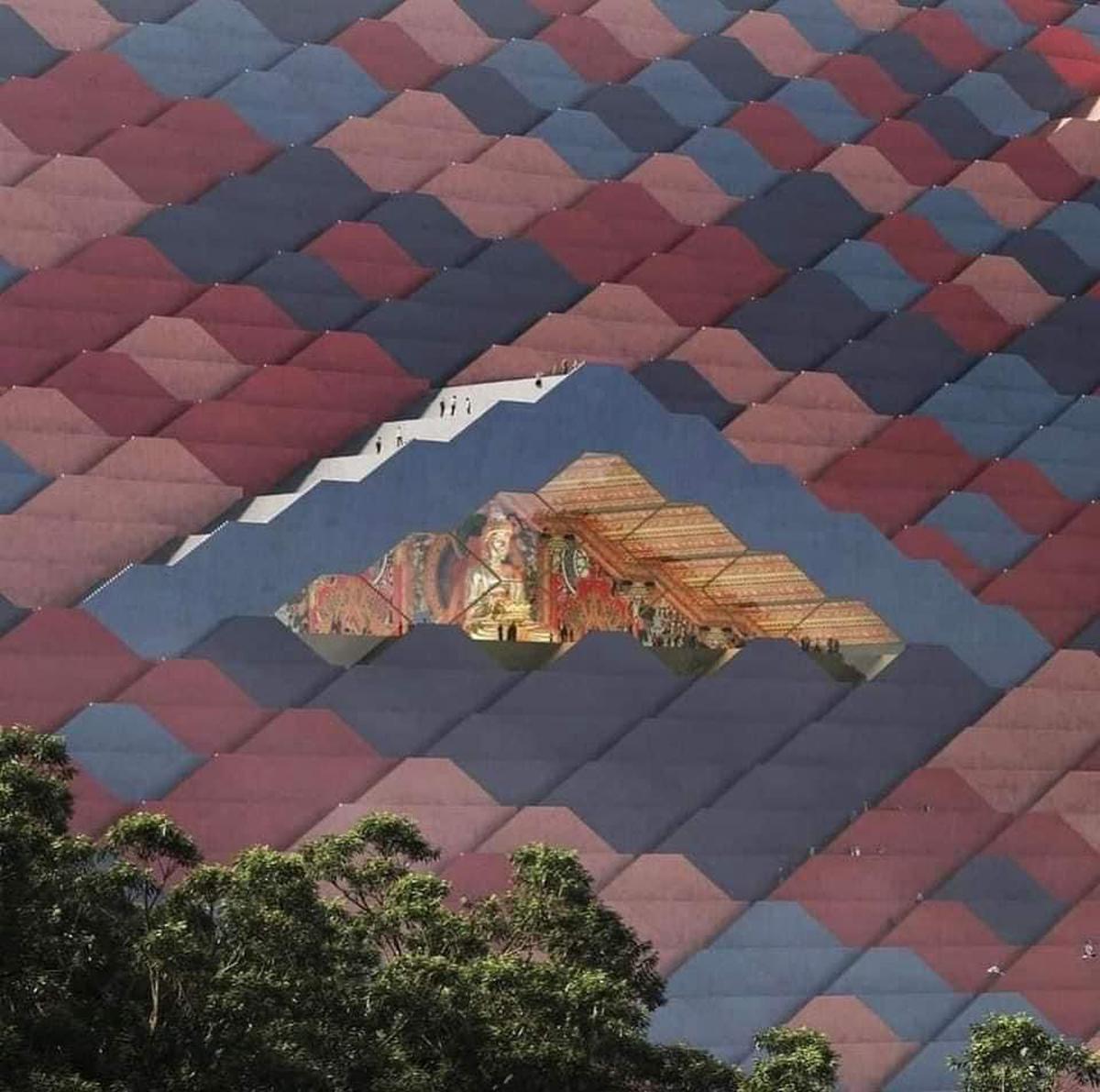
An artist’s impression of Gelephu | Photo Credit: Special Arrangement
Enter India Inc
The vision for Gelephu, however, has to be seen in the context of other South Asian urban hubs: Sri Lanka’s Hambantota port city and Pakistan’s Gwadar have tried and failed to do so, and India has a number of mega-cities catering to the IT sector. According to Tenzing Lamsang, founder and editor of The Bhutanese newspaper, India’s support to the Gelephu project is “absolutely crucial”. It explains why King Jigme made not one but two visits to Delhi to meet Prime Minister Modi last year, and also to Mumbai and Guwahati to bring both the government and India Inc. on board as stakeholders. India’s plans to build a rail link from Kokrajhar to Gelephu will close the loop on land transportation, while Indian infrastructure companies and labour will be needed for the big projects planned.
A concern for the traditionally shy and inward-looking Bhutanese is the loss of their culture and environment. Author and TV show host Yangday La said Bhutan’s USP was its mandated 60% forest cover and high-end tourism to limit the numbers of people entering the country. “When we look at the Gelephu project, I believe that Bhutan will need to find the balance in the Buddhist way, to balance growth and environment, happiness and sustainability.”
For the Oxford-educated and Indian National Defence College-trained king, his age is perhaps his greatest asset in this quest. He is able to connect to the restive youth of his country. When a camera found King Jigme at the national day concert, the image flashed on a screen. The crowd of about 30,000 sang ‘Kupar’ performed by Bhutanese singer Baby Floyd in his honour, lighting up their phones. When the camera zoomed in on the king, his eyes were visibly moist by the reception. Then quick as a trice, as if reminded of the massive responsibility he must face, he turned around and disappeared into Thimphu’s star-filled night.
Bhutan King Jigme’s ambitious plan for the sleepy town of Gelephu
‘Gelephu Mindfulness City’ will be spread over 1,000 sq.km. (bigger than Singapore), and is expected to attract non-polluting companies, IT centres, hospitals, schools and resorts, dams and hydro-power projects

Bhutan’s 116th National Day celebrations in Thimphu | Photo Credit: Special Arrangement
It was nearly midnight on a sub-zero December night, but the Bhutanese capital Thimphu seemed to be just waking up. Lines of thousands of people, young and old, snaked around the city’s major roads and town square, queuing up for the National Day celebrations the next day. They were queuing up just to ensure a seat at Thimphu’s Changlimithang Stadium, which normally hosts football matches, archery tournaments and rock concerts. But the venue was about to become the setting for what would be the most important speech by the nation’s 43-year-old King Jigme Khesar Namgyel Wangchuck.
Assisting the crowd to move along, distributing hot porridge overnight and helping clean up, was a massive army of volunteers, or desuups, part of the ‘Desuung’ (Guardians of Peace) project, launched by King Jigme in 2011. Clad in orange jumpsuits, these young women and men are trained for community projects, skilling and work opportunities, disaster management, security and ‘nation-building’, according to the Desuung charter; at more than 40,000, they are a significant number in a country of just 7.8 lakh people. Lobzang Dhendup, 17, told me he volunteered at the National Day event to hear King Jigme speak about the Gelephu infrastructure project, and then added, with a shy grin, “to glimpse the newly-born princess”, the three-month-old baby Sonam Yangden Wangchuck. His patience at his guard post paid off later that evening as he witnessed the entire royal family return to the stadium for a music concert.

King Jigme and his wife Jetsun Pema | Photo Credit: Getty Images
Bhutanese brand
What is the Gelephu project, and why is it so intricately linked with the Bhutanese king, a monarch with a rock-star appeal in this fledgling Himalayan democracy? As he stepped onto the podium, King Jigme made it clear that his mission was to explain to the nation his plans to turn Gelephu, a sleepy town of 60,000, near Bhutan’s southern border with Assam, into an “economic hub for South Asia”. Fifty years after his father, the fourth king, Jigme Singye, announced that Bhutan’s concept of Gross National Happiness would be an alternative to growth led by GDP, King Jigme said the ‘Gelephu Mindfulness City’ (GMC) would build a new Bhutanese brand, giving the world its first carbon-negative special economic zone.
“[Gelephu] will be a mindfulness city, encompassing conscious and sustainable businesses, inspired by Buddhist spiritual heritage, and distinguished by the uniqueness of the Bhutanese identity,” he announced, with his father and his seven-year old son seated behind him. “I became king at 26, and now I am 43 years old. I will do everything in my power to realise this vision. I will put my own life on the line… Let us work together with fearless determination to build an extraordinary legacy during my reign, and for the next generation,” he said, his softly-intoned voice in contrast with the heavy import of the words of a 45-minute speech.

A mandala shaped inhabitable bridge designed by the Bjarke Ingels Group as part of GMC | Photo Credit: Special Arrangement
An inflection point
GMC would be spread over a massive 1,000 sq.km. (bigger than Singapore), and would attract non-polluting companies, IT centres, hospitals, schools and resorts, dams and hydro-power projects with business-friendly laws in a demarcated Special Administrative Region separate from Bhutan. “The land connection from Gelephu through Assam and Northeast Indian States, to Myanmar, Thailand, to Cambodia and Laos, Vietnam, Malaysia and Singapore, is a vibrant economic corridor linking South Asia to Southeast Asia,” he said, painting GMC as an “inflection point” for the South Asian region.
King Jigme has picked an international firm to design the GMC: Bjarke Ingels, the Danish architect and founder of the Bjarke Ingels Group, behind the ‘CopenHill’ building in Copenhagen that houses a ‘waste to energy’ power plant with a ski-slope and trees on its roof, and has many other unique projects to his name, including one for ‘lunar architecture’.
Comparing Gelephu to the famous Taktsang monastery or ‘Tiger’s Nest’, perched high up on the Bhutanese mountains, Ingels said GMC “will be a man-made monument to the divine possibility of a sustainable human presence on earth”. A representational video of the city unveiled for possible foreign partners and investors in Thimphu showed 11 neighbourhoods set in the flat plains of Gelephu, criss-crossed by rivers, with an airport, healthcare and ‘Vajrayana’ spiritual centres, a university, hydroponic and aquaponic agricultural facilities.
By announcing the Gelephu plan right in the middle of Bhutan’s general elections, King Jigme has made it clear that it is his project, not that of any government. It is also clear that the need for the project arises from deep economic worries in the kingdom, that have driven more than 60,000 of its meagre population to jobs abroad, mainly to Australia, Thailand and Singapore and the U.S. This is in addition to about 1,00,000 Bhutanese-Nepalis who were driven out from the south of the country in the 1990s and became refugees abroad (Bhutan disputes the numbers cited by the UN on refugees).
Bhutan’s south was also the scene of Operation All Clear, when the previous fourth King Jigme Singye launched operations against ULFA, Bodo and other insurgent groups in the valley, leading the charge by the Royal Bhutanese Army to flush them out in December 2003, which the Indian Army assisted in.
Among those who have left most recently are the country’s youth, skilled workers and government officials (more than 800 resigned in just 2021-22), who, when asked, say, “gokap ra mindu” in local Dzongkha, or “there are no opportunities”.
“Our challenge is that we have barely 7,00,000 people in our country. Unless we find the right solution, our population may dwindle to the point when we have more shops than customers, more restaurants than diners, and more houses than tenants,” the king said in his speech, appealing to Bhutanese abroad to return now to participate in the Gelephu project.
But Bhutan’s challenges are much greater than providing openings for its next generation. To begin with, the government will need to sink in a large investment to get Gelephu started, to either extend the current airstrip or to build a whole new airport for larger planes to land. Then there are worries of entering a debt-trap that has engulfed many neighbours. Moreover, Gelephu receives copious rainfall, which could make parts of it inaccessible for several months. Tensions in neighbouring Northeast States of India, from Assam to Manipur, and the use of nearby forests by various insurgent groups, including some from Myanmar and Bangladesh, could pose security concerns, and so could India-China boundary tensions.

An artist’s impression of Gelephu | Photo Credit: Special Arrangement
Enter India Inc
The vision for Gelephu, however, has to be seen in the context of other South Asian urban hubs: Sri Lanka’s Hambantota port city and Pakistan’s Gwadar have tried and failed to do so, and India has a number of mega-cities catering to the IT sector. According to Tenzing Lamsang, founder and editor of The Bhutanese newspaper, India’s support to the Gelephu project is “absolutely crucial”. It explains why King Jigme made not one but two visits to Delhi to meet Prime Minister Modi last year, and also to Mumbai and Guwahati to bring both the government and India Inc. on board as stakeholders. India’s plans to build a rail link from Kokrajhar to Gelephu will close the loop on land transportation, while Indian infrastructure companies and labour will be needed for the big projects planned.
A concern for the traditionally shy and inward-looking Bhutanese is the loss of their culture and environment. Author and TV show host Yangday La said Bhutan’s USP was its mandated 60% forest cover and high-end tourism to limit the numbers of people entering the country. “When we look at the Gelephu project, I believe that Bhutan will need to find the balance in the Buddhist way, to balance growth and environment, happiness and sustainability.”
For the Oxford-educated and Indian National Defence College-trained king, his age is perhaps his greatest asset in this quest. He is able to connect to the restive youth of his country. When a camera found King Jigme at the national day concert, the image flashed on a screen. The crowd of about 30,000 sang ‘Kupar’ performed by Bhutanese singer Baby Floyd in his honour, lighting up their phones. When the camera zoomed in on the king, his eyes were visibly moist by the reception. Then quick as a trice, as if reminded of the massive responsibility he must face, he turned around and disappeared into Thimphu’s star-filled night.






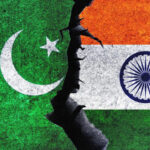
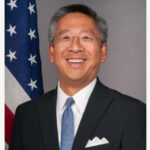

NO COMMENT